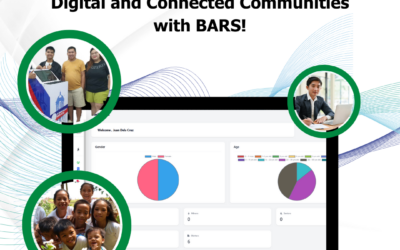Revolutionizing Barangay Services with BARS: The Future of Community Efficiency
Introduction
Have you ever found yourself waiting in long queues at your local barangay hall, wishing for a faster way to get things done? If so, you’re not alone. Barangays, the smallest administrative division in the Philippines, play a crucial role in local governance and service delivery. Enter Barangay Automated Records Solution, or BARS, a groundbreaking innovation poised to transform how barangays operate. But what exactly does this mean for you as a resident? Buckle up as we dive into the nitty-gritty of how BARS can change the game for barangays across the country.
Understanding Barangay Queuing Systems
The concept of a barangay queuing system is pretty straightforward — it’s all about managing how residents are served in a more orderly and efficient manner. Yet, the reality is often far from ideal. Long wait times, confusion about service processes, and even lost records are common challenges. These are not just inconveniences but serious barriers to effective governance.
Barangay Service Efficiency
Why is efficiency such a big deal anyway? Well, when barangay services are efficient, everything flows more smoothly. People get the help they need without unnecessary delay, which creates a ripple effect of positivity across the community. However, several factors can throw a wrench in the works, like outdated procedures, manual record-keeping, and a lack of resources.
Automated Queuing for Barangays
Imagine stepping into your barangay hall and rather than waiting in line, you receive a digital token on your smartphone or a kiosk. That’s the magic of automated queuing systems! The benefits? Reduced wait times, less congestion, and happier residents. For barangays, this means more streamlined operations and increased capacity to serve the community.
Digital Transformation in Barangay Services
We live in a digital age where everything from shopping to schooling is online. So, why should barangay services be any different? By embracing digital transformation, barangays can enhance service delivery and make life easier for residents. Technology is the wind beneath the wings of modern service delivery, accelerating efficiency and accessibility.
Features of Barangay Automated Records Solution (BARS)
BARS isn’t just another tech solution; it’s a comprehensive approach to revolutionizing barangay service delivery. From digital records management to real-time queuing data, BARS covers all the bases. It’s designed to tackle inefficiencies head-on, ensuring that residents can access services quickly and effortlessly.
Implementing BARS in Barangays
Transitioning to a system like BARS involves a series of carefully planned steps. It starts with understanding the specific needs of a barangay, engaging with stakeholders, and systematically rolling out the technology. Of course, training and support are integral to ensure everyone can make the most of this new system.
Success Stories and Case Studies
In regions where BARS has been pilot-tested, the results are promising. Barangays have reported faster processing times, improved resident satisfaction, and better data accuracy. These success stories highlight the transformative impact BARS can have, turning skeptics into believers.
Overcoming Challenges and Concerns
Adoption of any new system comes with its set of challenges. Concerns may arise around data privacy, usability, and initial costs. Addressing these head-on is crucial. BARS comes with robust security measures to protect resident data, and a user-friendly interface ensures that even tech novices can navigate the platform with ease.
The Future of Barangay Services
Looking ahead, the future of barangay services is luminous with potential. As digital adoption grows, barangays will likely see even more sophisticated tools and platforms. This digital renaissance will pave the way for better, more inclusive service delivery, leaving no community member behind.
How BARS Aligns with Government Initiatives
BARS isn’t operating in a vacuum; it’s in sync with national and local government goals aimed at improving public service efficiency. As such, there’s strong backing that not only supports its implementation but also promises to maximize its benefits.
Cost and Investment Considerations
Worried about the cost? While initial investment is necessary, the long-term ROI makes it more than worthwhile. Think of it as sowing the seeds for a more fruitful community future. Over time, the efficiency gains and resource savings from using BARS can offset upfront costs.
Community Engagement and Feedback
For BARS to truly succeed, community buy-in is essential. Engaging residents through consultations and actively seeking feedback ensures the system evolves to meet real needs. Remember, it’s the community that will ultimately drive the success of such initiatives.
Long-term Impact on Communities
The benefits of implementing BARS extend beyond immediate service improvements. More efficient barangay services can lead to greater trust in local governance, enhancing community bonds and paving the way for socio-economic development. It’s a win-win situation for everyone.
Conclusion
The transformation of barangay services through innovations like BARS is not just a possibility — it’s a necessity for responsive and proactive local governance. As barangays across the Philippines embrace digital transformation, residents can look forward to quicker, more efficient services that cater to their needs. The path forward for barangay services is clear, and BARS is leading the charge.
FAQs
1. How does an automated barangay queuing system improve service delivery?
Automated queuing reduces wait times and manages resident flow efficiently, leading to faster and more organized service delivery.
2. What are the initial steps for implementing BARS in a barangay?
Implementation involves assessing barangay needs, stakeholder discussions, technology rollout, and training for staff on using the system.
3. How does BARS handle data privacy and security concerns?
BARS employs robust security measures, including encryption and access controls, to ensure resident data remains private and secure.
4. Can BARS be customized for different barangays?
Yes, BARS is highly customizable to cater to the specific needs and challenges of individual barangays, ensuring relevance and effectiveness.
5. How does BARS contribute to community development?
By streamlining service delivery and fostering trust in local governance, BARS lays the groundwork for socio-economic advancement and community empowerment.




0 Comments